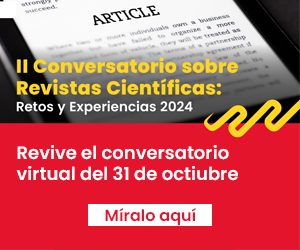Nocturnal enuresis in an adolescent with anxiety disorder during the COVID-19 pandemic.
DOI:
https://doi.org/10.20453/rnp.v85i4.4372Keywords:
Nocturnal enuresis, illness anxiety disorder, COVID-19, adolescentAbstract
The case of an adolescent with nocturnal enuresis since childhood, and anxiety symptoms during adolescence, associated with psychosocial factors and family dynamics, is presented. During the COVID-19 pandemic, he presented intense symptoms of anxiety related to fears of dying and/or experiencing a serious illness, reasoned for which he was taken to the emergency room on several occasions. The patient responded favorably to antidepressant medications, and individual and family psychotherapy approaches. Nocturnal enuresis es an elimination disorder rarely seen in adolescence, and whose diagnosis and treatment are important due to its impact on the patient’s psychosocial functioning and greater probabilities of comorbidity. The effects of the COVID-19 pandemic on adolescents and its higher risk of presenting anxiety, depression and stress associated with enuresis, are also discussed.
Downloads
References
Sadock B, Sadock V, Ruiz P. Kaplan & Sadock Sinopsis de psiquiatría. Pensilvania: Lippincott Williams & Wilkins; 2015.
American Psychiatric Association. Manual diagnóstico y estadístico de los trastornos mentales DSM-5. Madrid: Editorial Médica Panamericana; 2014.
Mota DM, Matijasevich A, Santos IS, Petresco S, Mota LM. Psychiatric disorders in children with enuresis at 6 and 11 years old in a birth cohort. Jornal de pediatria. 2020; 96(3): 318–326. Doi: 10.1016/j.jped.2018.11.010
Nelson T, Chae H, Anbar RD, Stein MT. Persistent Encopresis, Enuresis, and Anxiety in a 7-Year-Old Girl. JDBP. 2017; 38(8): 680–682. Doi: 10.1097/DBP.0000000000000504
Joinson C, Heron J, von Gontard A, Butler U, Golding J, Emond A. Early childhood risk factors associated with daytime wetting and soiling in school-age children. Journal of pediatric psychology. 2008; 33(7): 739–750. Doi: 10.1093/jpepsy/jsn008
Eray Ş, Tekcan D, Baran Y. More anxious or more shy? Examining the social anxiety levels of adolescents with primary enuresis nocturna: a controlled study. Journal of pediatric urology. 2019; 15(4): 343.e1–343.e5. Doi: 10.1016/j.jpurol.2019.04.002
Salehi B, Yousefichaijan P, Rafeei M, Mostajeran M. The Relationship Between Child Anxiety Related Disorders and Primary Nocturnal Enuresis. Iran J Psychiatry Behav Sci. 2016;10(2):e4462. doi: 10.17795/ijpbs-4462
Sun C, Xu Y, Luo C, Li Q. Relationship between enuresis and obstructive sleep apnea-hypopnea syndrome in children. J Int Med Res. 2020;48(12):300060520977407. doi: 10.1177/0300060520977407
Jones E, Mitra AK, Bhuiyan AR. Impact of COVID-19 on Mental Health in Adolescents: A Systematic Review. Int J Environ Res Public Health. 2021;18(5):2470. doi: 10.3390/ijerph18052470
Rangel RA, Seabra CR, Ferrarez C, Soares JL, Choi M, Cotta RG, et al. Quality of life in enuretic children. Int Braz J Urol. 2021;47(3):535-541. doi:
1590/S1677-5538.IBJU.2020.0308
de Sena Oliveira AC, Athanasio B, Mrad F, Vasconcelos M, Albuquerque MR, Miranda DM, et al. (2021). Attention deficit and hyperactivity disorder and nocturnal enuresis co-occurrence in the pediatric population: a systematic review and meta-analysis. Pediatr Nephrol. 2021;36(11):3547-3559. doi: 10.1007/s00467-021-05083-y
Khemakhem K, Ayedi H, Moalla Y, Yaich S, Hadjkacem I, Walha A, et al. Comorbidité psychiatrique au trouble déficit de l'attention/hyperactivité en population scolaire dans la région de Sfax. Tunisie : étude transversale. L'Encephale. 2015; 41(1): 56–61. Doi:10.1016/j.encep.2012.08.009
Akan S, Ürkmez A, Yildirim C, Sahin A, Yüksel ÖH, Verit A. Late-onset secondary nocturnal enuresis in adolescents associated with post-traumatic stress disorder developed after a traffic accident. Arch Ital Urol Androl. 2015;87(3):250-1. doi: 10.4081/aiua.2015.3.250.
Shafiek H, Evangelisti M, Abd-Elwahab NH, Barreto M, Villa MP, Mahmoud MI. Obstructive Sleep Apnea in School-Aged Children Presented with Nocturnal Enuresis. Lung. 2020; 198(1): 187–194. Doi: 10.1007/s00408-019-00304-6
Yılmaz S, Erat-Nergiz M, Özlü SG. Effect of enuresis on perceived parental acceptance-rejection in children. Turk Arch Pediatr. 2021;56(1):62-67. doi: 10.14744/TurkPediatriArs.2020.36744
Minozzi S, Saulle R, Amato L, Davoli M. Impatto del distanziamento sociale per covid-19 sul benessere psicologico dei giovani: una revisione sistematica della letteratura. Recenti Prog Med. 2021;112(5):360-370. doi: 10.1701/3608.35873.
Gasteiger N, Vedhara K, Massey A, Jia R, Ayling K, Chalder T, Coupland C, Broadbent E. Depression, anxiety and stress during the COVID-19 pandemic: results from a New Zealand cohort study on mental well-being. BMJ Open. 2021; 11(5): e045325. Doi: 10.1136/bmjopen-2020-045325















 RNP is distributed under a
RNP is distributed under a 